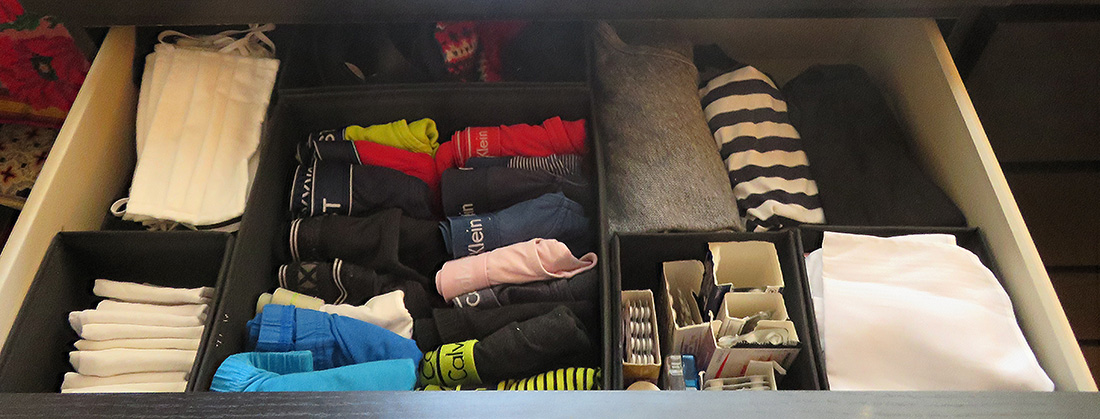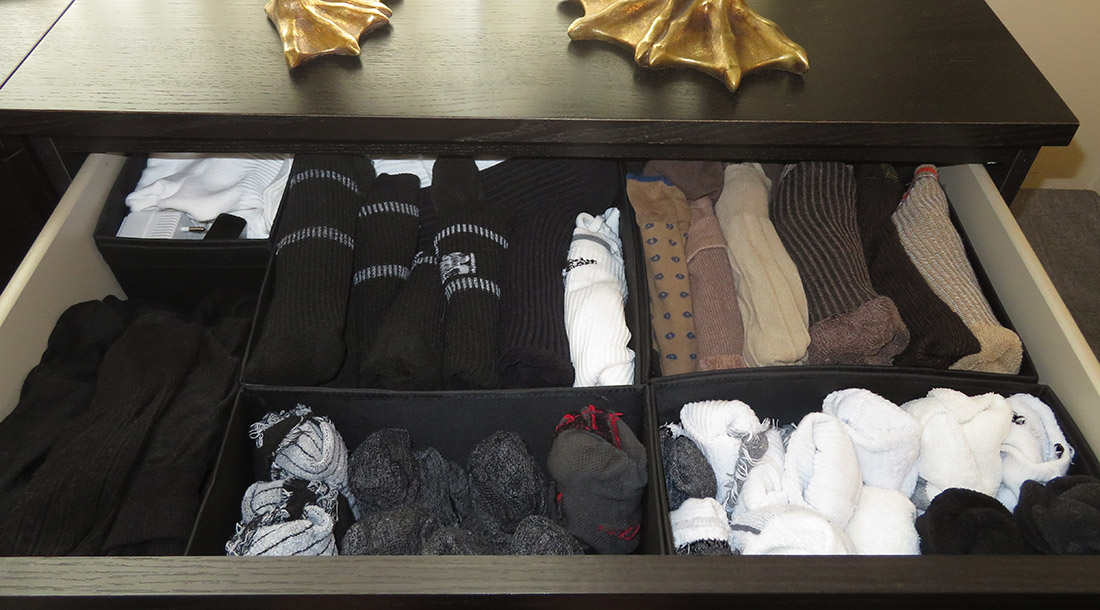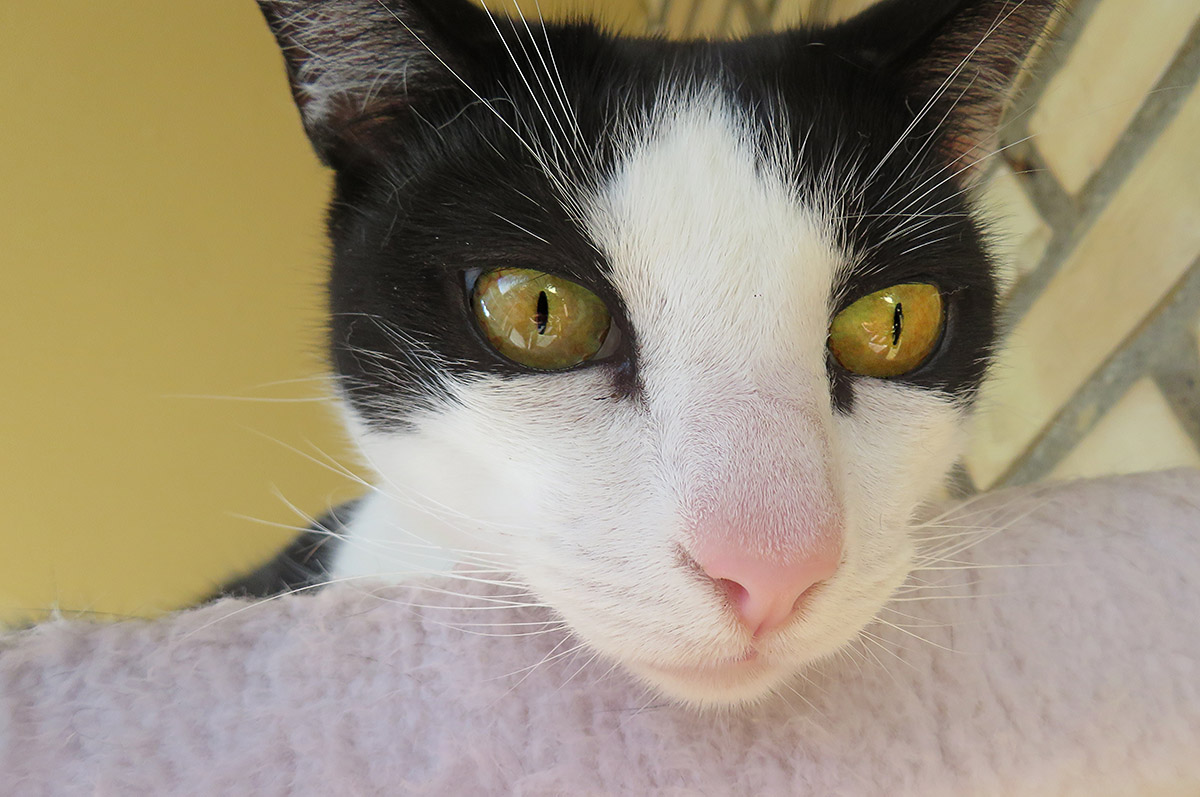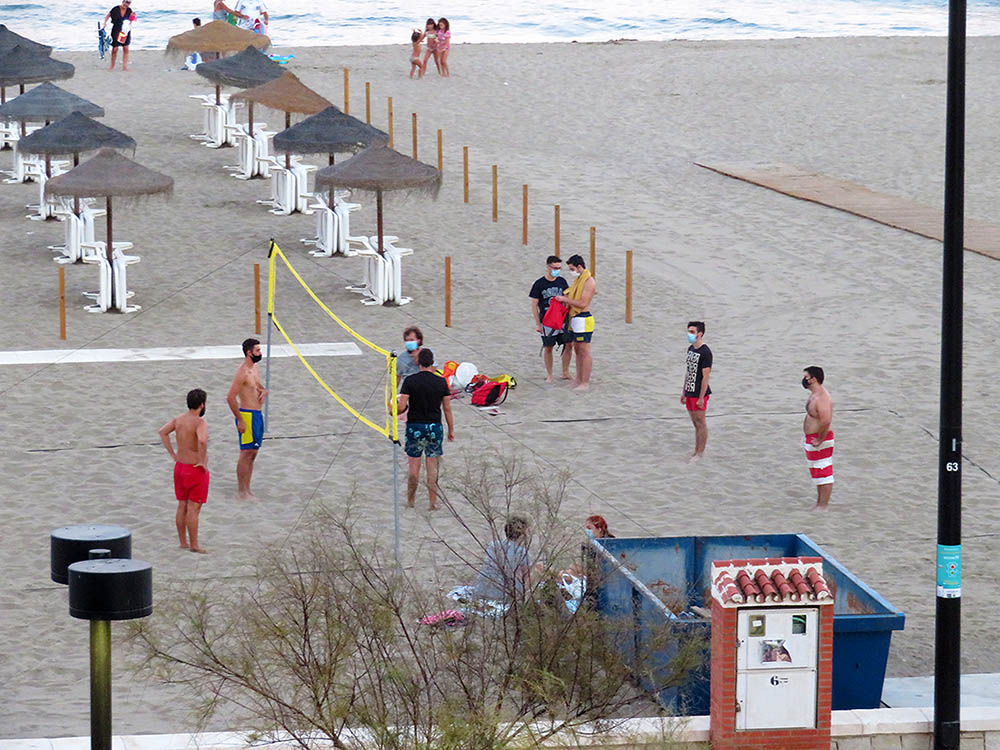La versión en español está después de la versión en inglés.
I DECIDED TODAY TO SHARE photos of my drawers, because their neatness makes me happy. That (drawers, not their neatness) reminded me of my early childhood and trying to understand the complexities of the English language.
My parents were both born and raised in Brooklyn. My Mother the Dowager Duchess had a fairly sophisticated accent. My father’s accent was less so but not as “street” as it could have been (The Duchess made sure of that).
We lived on Long Island, a suburb of New York City with similar dialect and a few variations of its own. I loved to learn new words and to write them. I sat at the kitchen table one day writing new words just for fun. C-I-R-C-U-L-A, I wrote. My Mother the Dowager Duchess looked over and said, “There’s an ‘R’ at the end,” before saying the word aloud in her New York City accent, “circula.” I replied, “No there’s not. You said ‘circula.’” She said, “Yes, there’s an ‘R’ at the end. It’s silent.”
One evening at dinner, I said, “Please pass the butter,” emphasising the ‘R’ at the end of the word. The Duchess asked, indignantly, “Where did you learn to speak like that?” (Apparently another silent ‘R’.)
Another time, I was doing a homework assignment and I wrote, “Put it in the draw.” The Duchess corrected my spelling. How she explained it was, “The word is ‘draw’ with an ‘ER’ at the end. Not ‘draw’ like a picture.” Argh.
We moved to Brooklyn when I was 10. I had a friend who told me his parents bought him a new ‘chestadraws.’ I had no idea what he was talking about (a chest of drawers).
I left New York a long time ago. I draw a picture and I put my drawers in a drawer. My ‘Rs’ are not silent. And now I’m going to try and explain this all in Spanish.
NOTE:
For those of you who know only a tiny bit of Spanish, the word cajones in the title may have surprised you. Cajones means drawers (like those in your dresser) and is not to be confused with cojones, which means balls (like those in your, um, drawers — well in some drawers).
Speaking of which, my father had a woman on his staff (a supervisor) who annoyed him regularly. She expected to be treated like the men. Imagine that. Her name was Cleo. My father regularly complained to The Duchess about Cleo. He would say, “She’s got a pair of balls for a broad.” If we kids were within hearing range, The Duchess would say, “David!”
.
DECIDÍ HOY COMPARTIR FOTOS DE mis cajones, porque su pulcritud me hace feliz. Eso (los cajones, no su pulcritud) me recordó a mi primera infancia y al tratar de entender las complejidades del idioma inglés.
Mis padres nacieron y se criaron en Brooklyn. Mi madre, la duquesa viuda, tenía un acento bastante sofisticado. El acento de mi padre lo era menos, pero no tan “callejero” como podría haber sido (La duquesa se aseguró de eso).
Vivíamos en Long Island, un suburbio de la ciudad de Nueva York con un dialecto similar y algunas variaciones propias. Me encantaba aprender nuevas palabras y escribirlas. Me senté a la mesa de la cocina un día escribiendo nuevas palabras solo por diversión. C-I-R-C-U-L-A, escribí. Mi madre, la duquesa viuda, miró y dijo: “Hay una ‘R’ al final”, antes de decir la palabra en voz alta con su acento de la ciudad de Nueva York, “circula”. Respondí: “No, no lo hay. Dijiste ‘circula’”. Ella dijo: “Sí, hay una ‘R’ al final. Es silenciosa”.
Una noche, durante la cena, dije: “Por favor, pásame la ‘butter’ [mantequilla]”, haciendo hincapié en la ‘R’ al final de la palabra. La duquesa preguntó, indignada: “¿Dónde aprendiste a hablar así?” (Aparentemente, otra ‘R’ silenciosa).
En otra ocasión, estaba haciendo una tarea y escribí: “Ponlo en el ‘draw’”. La duquesa corrigió mi ortografía. La forma en que lo explicó fue: “La palabra es ‘draw’ [cajón] con una ‘ER’ al final. No ‘draw’ [dibuja] como una imagen.” Uf.
Nos mudamos a Brooklyn cuando tenía 10 años. Tenía un amigo que me dijo que sus padres le habían comprado un nuevo “chestadraws”. No tenía idea de lo que estaba hablando (‘chest of drawers’, una cómoda).
Me fui de Nueva York hace mucho tiempo. Yo ‘draw’ [dibujo] y guardo mi ‘drawers’ [ropa de interior] en un ‘drawer’ [cajón}. Mis ‘R’ no son silenciosas. Esto era bastante confuso en inglés. Espero que tenga al menos algún sentido en español.

Las camisetas están organizadas por cuello (de pico o redondo), por peso de algodón y luego (un tanto) por color. Y luego está la sección especial coronada por mis camisetas de Dakota del Sur.

La ropa interior está organizada por marca (por ajuste), por orden de uso (para que circule) y por estilo (calzoncillos, cortes cuadrados).

El cajón de calcetines.

A Dudo le gustaría dormir en mis cajones. Oh, cuánto amo a estos gatos. Sólo mira esa cara.

Y hablando de ‘drawers’ (pantalones).

